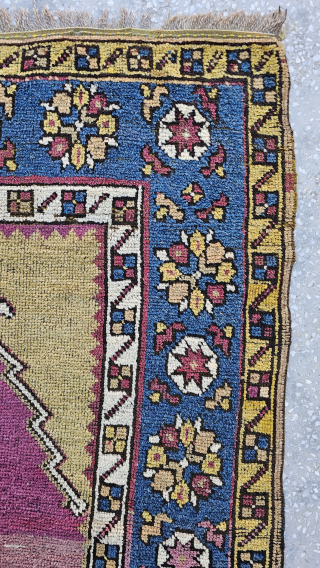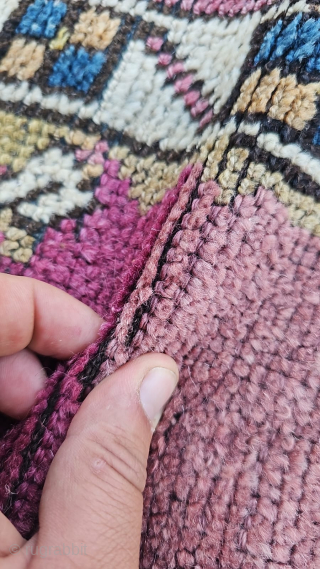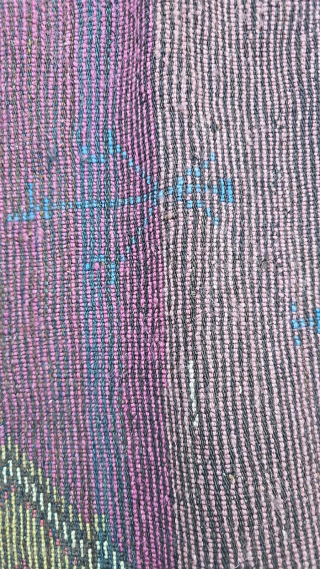Back
I'm selling this turn-of-the-20th-century piece. (1890-1910) Manastir pile prayer rug
My description:
The seemingly Konya-like mihrab — supported also by the colour scheme — appears unusual in this unique artefact. Its strangeness, possibly referencing an abstract tree of life, suggests a degree of the weaver’s unfamiliarity with canonical design conventions.
Unlike most classical Ottoman prayer rugs, where the niche (mihrab) forms a complete and clearly bordered space creating a dedicated area for prayer, Manastir weavers – whether working in pile or flatweave – typically depict only the upper part of the niche. This truncated or partial niche is a distinctive feature of their weaving tradition, suggesting a stylistic choice rather than a strictly liturgical function
The pronounced colour variation in the prayer niche of this Manastir rug may have several explanations. It could result from differences in wool quality, with certain batches absorbing dye less effectively, or from abrash, caused by using separate dye lots that produced slightly different shades. However, upon close examination of the artefact, it appears that this effect was intentional, introduced by the weaver to add visual interest.
Sonny Bertsson’s pioneering observations on colour (Sonny Berntsson, “Balkans and Back,” Hali 112, pp. 98–103) provide valuable insight into these types of prayer rugs.
He emphasised that, beyond design motifs, subtle variations in colour shades often reveal underlying technical and cultural processes. For Bertsson, colour was not merely aesthetic but structural, interwoven with the very nature of the yarn, dye, and weave.
He noted that differences in hue within a single field section are often intentional visual variation, especially in tribal weaving traditions, where weavers embraced such shifts to create liveliness and depth.
price:
Negotiable
- Home
- Antique Rugs by Region
- Category
- Profiles
- Post Items Free
- Albums
- Benaki Museum of Islamic Art
- Budapest: Ottoman Carpets
- Gulbenkian Museum
- Islamic Carpets. Brooklyn
- Islamic Textiles. Brooklyn
- Konya Museum: Rugs
- MKG, Hamburg
- MMA: Caucasian Carpets
- MMA: Mamluk Carpets
- MMA: Mughal Indian Carpets
- MMA: Ottoman Carpets
- MMA: Safavid Persian Carpets
- MMA: Turkmen Rugs
- McCoy Jones Kilims
- Ottoman textiles. Met
- Philadelphia Museum
- Rugs and Carpets: Berlin
- Seljuqs at the Met
- TIEM, Istanbul: Carpets
- V&A: Classical Carpets
- Vakiflar Carpets: Istanbul
- Baluch Rugs: Indianapolis
- Gallery Exhibitions
- Jaf an Exhibition
- Alberto Levi Gallery
- Andean Textile
- Christie's London: 2016
- Francesca Galloway
- HALI at 40
- ICOC Washington, DC 2018
- Jajims of the Shahsavan
- London Islamic Week April, 2018
- Mongolian Felts
- Navajo Rugs: JB Moore
- Persian Piled Weavings
- SF Tribal & Textile Art Show 2020
- SF Tribal 2019
- Sotheby's: C. Alexander
- Turkish Prayer Rugs
- Turkmen Main Carpets ICOC 2007






















